 February has begun, Punxsutawney Phil has done his schtick, and time seems to be moving at breakneck speed. In a little over two weeks, Invasives, the second Radiants book, will be released by Belle Books.
February has begun, Punxsutawney Phil has done his schtick, and time seems to be moving at breakneck speed. In a little over two weeks, Invasives, the second Radiants book, will be released by Belle Books.
Like Radiants, this is a supernatural thriller. This time, though, I have set my thriller in New York City, and a good deal of the story takes place in the New York subway tunnels. My lead characters are a trio of homeless, runaway teens — Mako, Bat, and, my main protagonist, Drowse. They live off what they can make by scrounging and, yes, stealing, and they take shelter in a house built of cardboard and shower curtains, tape and rope and plastic ties.
Bat is blind. He comes from money, but had to leave his home. When the book opens, we don’t know why.
Mako was involved in gang activity for a time, but eventually went straight. Or tried. Did I mention they have to steal?
Drowse ran away from a terrible home situation. She turned tricks for a time. Ran drug money. Now she’s trying to hold their small “family” together and survive in the Below. And, as it happens, she’s a Radiant, whose power is invaluable to their business.
But her abilities, and the business they do, have now attracted the notice of some of the most powerful people in New York’s financial world. They want something Drowse has, and they are willing to do anything, kill anyone, to get it.
Intrigued? I hope so. I love, love, love this book. Yes, I know, I say that about all my books when they come out. Because it’s true.
Invasives, though, is special to me in a couple of ways.
First, this is the book I was writing when we first got my daughter’s cancer diagnosis last March. At first, I put my writing on hold. I could barely function. I could barely think. How the hell was I supposed to write a novel? Well, as it turned out, writing this book was just what I needed. It is a fraught narrative, filled with suspense and tension. It focuses on these three characters, on their love for one another, on their bonds, and the forces trying to tear them apart. It wasn’t about cancer at all, and that was a good thing. But the story gave me an outlet for all the emotions churning inside me. As I have said before, I could not have gotten through the ordeal of last spring and summer without this novel.
And second, Drowse, Mako, and Bat were with me, lurking in my imagination, for more than a decade before I finally started work on this book. I had the idea for them, for their circumstances and relationships, long before I knew what story to build around them. I knew only that I loved the characters, and their dynamic. I had one idea for a novel, but I could never quite figure out the storyline, the world, the ending. I did write a kick-ass opening chapter for it, though.
Then, two years ago, I began writing the first Radiants book, and as I thought about subsequent volumes, Drowse and her friends popped back into my head. This was their story. Finally. This was the perfect world in which to place them. I even was able to use an updated version of that opening chapter.
I have said before, half in earnest, half in jest, that writers are packrats. We keep everything. Or at least we should. When I figured out that Drowse et al. would be the perfect protagonists for my second Radiants book, I knew just where to find the original character sketches, the original opening chapter, the original storyline for their caper. Because even that wound up factoring in to the creation of Invasives.
I never lost faith in the groundwork I did for their story all those years ago. I knew there was a novel there, somewhere. It was just a matter of placing it.
That happens to me a lot, and I know it happens to other authors as well. Sometimes we have an idea, and we are ready immediately to write and publish it. Other times, stories and characters take a while to steep, like good, strong tea. For ten years, Drowse, Mako, and Bat waited in a file on my computer desktop. It wasn’t that the original idea was bad or lacking in some way. It just wasn’t ready. Or rather, I wasn’t yet ready to write it in a way that did justice to the power of the original notion.
And that made the final realization of their tale in this novel all the more satisfying.
Keep writing. And don’t throw any idea away!









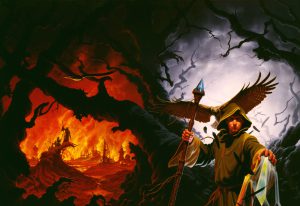 For the Thieftaker novels, Tor hired the incomparable
For the Thieftaker novels, Tor hired the incomparable  The thing to remember about artwork, though, is that it’s not enough for the covers to be eye-catching. They also need to tell a story — your story. The Thieftaker covers work because they convey the time period, they offer a suggestion of the mystery contained within, and they hint as well at magic, by always including that swirl of conjuring power in Ethan’s hand. The Islevale covers all have that golden timepiece in them, the chronofor, which enables my Walkers to move through time. All my traditional epic fantasy covers, from the LonTobyn books through the Forelands and Southlands series, convey a medieval fantasy vibe. Readers who see those books, even if they don’t know me or my work, will have an immediate sense of the stories contained within.
The thing to remember about artwork, though, is that it’s not enough for the covers to be eye-catching. They also need to tell a story — your story. The Thieftaker covers work because they convey the time period, they offer a suggestion of the mystery contained within, and they hint as well at magic, by always including that swirl of conjuring power in Ethan’s hand. The Islevale covers all have that golden timepiece in them, the chronofor, which enables my Walkers to move through time. All my traditional epic fantasy covers, from the LonTobyn books through the Forelands and Southlands series, convey a medieval fantasy vibe. Readers who see those books, even if they don’t know me or my work, will have an immediate sense of the stories contained within.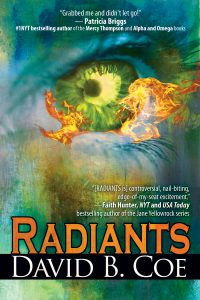 And that’s what we want. Sure, part of what makes that Invasives cover work is the simple fact that it’s stunning. The eye, the flames, the lighting in the tunnel. It’s a terrific image. But it also tells you there is a supernatural story within. And while the tunnel “setting” is unusual, the presence of train tracks, wires, electric wiring, and even that loudspeaker in the upper left quadrant of the tunnel, combine to tell you the story takes place in our world (or something very much like it). And for those who have seen the cover of the first book in the series, Radiants, the eye and flames mark this new book as part of the same franchise. That’s effective packaging.
And that’s what we want. Sure, part of what makes that Invasives cover work is the simple fact that it’s stunning. The eye, the flames, the lighting in the tunnel. It’s a terrific image. But it also tells you there is a supernatural story within. And while the tunnel “setting” is unusual, the presence of train tracks, wires, electric wiring, and even that loudspeaker in the upper left quadrant of the tunnel, combine to tell you the story takes place in our world (or something very much like it). And for those who have seen the cover of the first book in the series, Radiants, the eye and flames mark this new book as part of the same franchise. That’s effective packaging.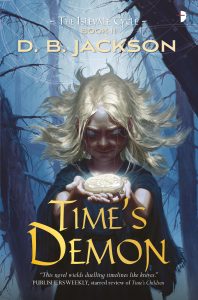 In the same vein, poor marketing practices by a publisher, even if inadvertent, can doom even the most beautiful book. I LOVE the art for Time’s Demon, the second Islevale novel. But the novel came out when the publisher was going through an intense reorganization. It got little or no marketing attention, and despite looking great and being in my view one of the best things I’ve written, it was pretty much the worst-selling book of my career.
In the same vein, poor marketing practices by a publisher, even if inadvertent, can doom even the most beautiful book. I LOVE the art for Time’s Demon, the second Islevale novel. But the novel came out when the publisher was going through an intense reorganization. It got little or no marketing attention, and despite looking great and being in my view one of the best things I’ve written, it was pretty much the worst-selling book of my career.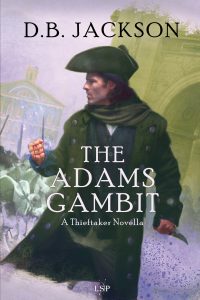 And so around that time, unsure of what to write next, I acted on an idea I’d had for several years. I hung out my virtual shingle as a freelance editor. Work came in quickly, and before I knew it I was editing a series for one friend, and talking to others about future editing projects. I also released the Thieftaker novellas. And prepared for the October release of Radiants. And started gearing up for the Kickstarter for Noir, the anthology I’m co-editing for
And so around that time, unsure of what to write next, I acted on an idea I’d had for several years. I hung out my virtual shingle as a freelance editor. Work came in quickly, and before I knew it I was editing a series for one friend, and talking to others about future editing projects. I also released the Thieftaker novellas. And prepared for the October release of Radiants. And started gearing up for the Kickstarter for Noir, the anthology I’m co-editing for 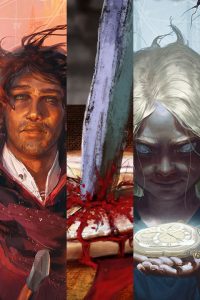 A couple of years ago, I put the finishing touches on the third book of a time travel/epic fantasy trilogy called the
A couple of years ago, I put the finishing touches on the third book of a time travel/epic fantasy trilogy called the 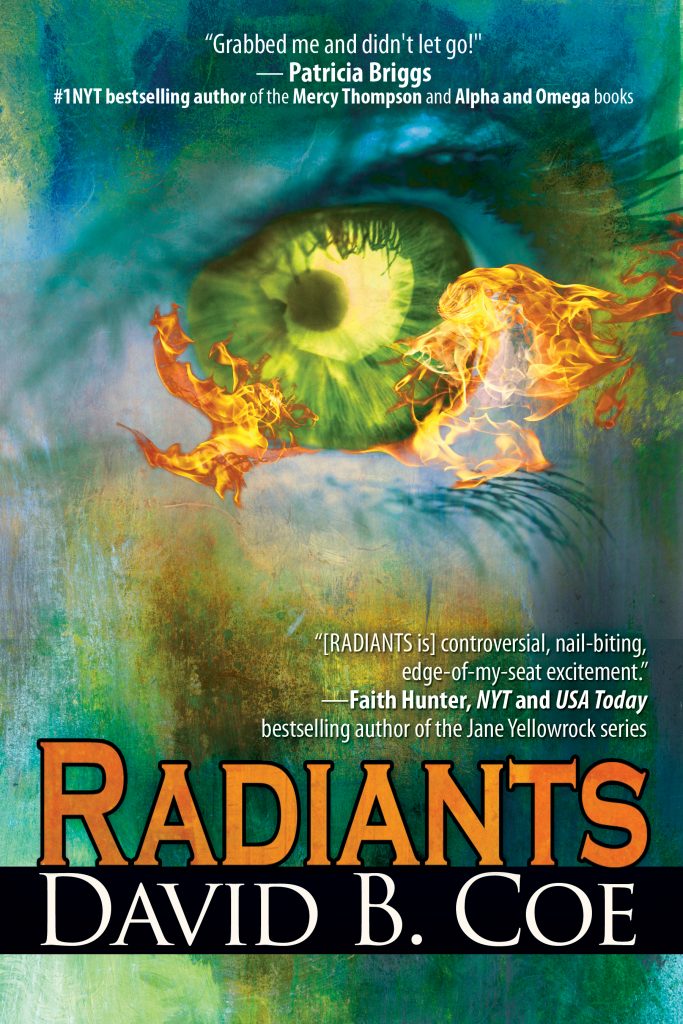 And that next book turned out to be Radiants.
And that next book turned out to be Radiants.